A commenter on yesterday's post about glass-fibre speaker-box lagging lamented that he can't get loudspeaker kits in the States.
He is wrong. There are definitely speaker-kit sellers in the States. Probably quite a few of them, given the much larger market. (Australian population: 23 million. US population: 314 million.)
I think the biggest name in US speaker kits (do feel free to correct me in the comments) is Parts Express, mostly under their in-house "Dayton" brand. There was a Dayton driver...
...in the kit subwoofer I reviewed.
Parts Express sell everything you need to make speakers of your own design, and have a reasonable selection of kits, too. Their speaker-kit listing is here; prices are quite good, especially given that most of the kits have enclosures that are veneered or otherwise nicely finished.
This super-cheap Parts Express kit comes with only bare plywood boxes, but it's two little 2-way speakers for $US128 with free US delivery! For some reason the kit lacks binding posts and wire, but you can get those for a few bucks more; if you're really pinching pennies, buy those parts on eBay from China.
(Oddly, absolutely nobody seems to sell speaker kits on eBay. I wonder if that's because of the awkwardness of shipping all that wood.)
Note that these little speakers aren't really "bookshelf" speakers, because they have a port on the back, and if you plug the port by pushing it up against a wall, your bass will go away. You certainly can put them on a bookshelf, but you can't push them all the way in like a book.
This Parts Express kit is expensive...
...and regrettably also out of stock, but how can you not want them!?
Back here in Australia, the inventively named "The Loud Speaker Kit", makers of all the kit speakers I've reviewed, is now out of business. I'm not an authority on other Australian speaker-kit places, but I know of a few.
Peninsula Home Theatre have some rather expensive options (their prices are per speaker, not per pair...), but the drivers are high-quality and the boxes are very nicely finished.
Decibel Hi-Fi's omnidirectional kit speakers look fun too, but are a bit expensive.
Danish Sound Technology have kits, but you have to contact them for prices, which is not a good sign.
The Fountek "Signature Series" kits look good for the money, though.
ER Audio has electrostatic-speaker kits, which are all very expensive, but that's because electrostatic loudspeakers are awesome. (They're hideously incompatible with cats and small children, though.)
VAF Research sell kit versions of at least some of their speakers, too, but they're very high-end so their kits cost thousands as well.
At one time or another I think all of the Australian chain electronics stores - Altronics, Dick Smith, Jaycar and possibly even Tandy (Radio Shack in the States, amalgamated with Dick Smith now in Australia) - have offered speaker kits. At the moment I think only Jaycar have them, and they've only got one.
These electronics plus these cabinets give you...
...some very nice European-driver loudspeakers for $AU698 all up, which is quite good value.
You could save a little by only buying the electronics and building your own cabinets. Many "speaker kit" dealers work this way - they sell "short form" kits, giving you everything but the boxes. In Australia, people who sell these kinds of kits include Soundlabs Group and Stones Sound Studio, the latter dealer continuing the proud association between... untidy... Web-site design and audiophile woo-woo. (They also sell the Fountek kits mentioned above.)
Making your own enclosures isn't actually all that hard, by the way; I did it when I was a teenager. If you're a DIYer without a table saw, you just go to a place that sells wood-sheet products and get them to cut some MDF to size for you. Note that they will probably only do cuts all the way across the sheet (or what remains of the sheet after previous cuts), so it can be a bit of a puzzle to get all the parts you want out of the minimum number of sheets. This lets you have unusual finishes on your speakers, though; any material you can use for a kitchen counter, for instance, you can use for a speaker.
Anyway, you get the panels made, then assemble the boxes at home with simple screws 'n' glue and ugly butt joints (proper woodworkers of course use mitre joints). You can jigsaw the holes for the drivers; it doesn't matter if the holes aren't perfectly round, because the driver surround will cover them.
(When I was about 15, I cut my own box panels freehand with a jigsaw from a sheet of super-cheap particle board, and then plugged the gaps where the wood didn't quite touch with Blu-Tack!)
Taking the further step of building your own speakers from scratch isn't that hard, either, especially if you build simple sealed boxes. Doing it entirely yourself is also the only way to get some unusual speaker designs, like corner-loaded horns and transmission lines, at an affordable price.
Transmission lines are one of my favourite loudspeaker types. You make a tall hollow square wooden tube, or reduce the size by folding the tube and putting periscope-type sound-reflecting angled pieces on the corners. The drivers go at the top in the front, there's a port at the bottom at the back, with lagging material all the way down the tube so very little sound actually makes it out of the back. Even if the driver you use is a paper-cone widerange from a junkyard car, the result will often be quite startlingly good, even though the frequency-response plot will look dreadful.
There's no good way to get low bass out of this design without making it really big, though - I once made some folded transmission lines with eight-inch whizzer-cone wideranges in them, and they still didn't have really low bass, but were serious pieces of furniture. So if that matters to you and you don't want the speakers to dominate the room a bit, you'll need a subwoofer as well.
Building your own cabinets also lets you massively over-build the cabinets, for near-zero panel resonance. The easiest way is to use super-thick wood and many braces inside, but you can also make a double-walled design filled with sand, cement or even lead shot, or line the panels with lead sheet. Many super-expensive speakers have cabinets like this, but retailers hate them; do-it-yourself lets you have super-cabinets with affordably-priced drivers in them.
I'm sure some readers know of other speaker-kit outfits; I only mentioned Parts Express in the States, but I'm sure there are more options there and in other countries. I invite people living elsewhere to comment.
And heck, we don't even have to be talking about only kit speakers. Do tell if you know of pre-built speakers that offer similar value for money, like those white-van speakers sold for fair prices on eBay I wrote about a while ago.
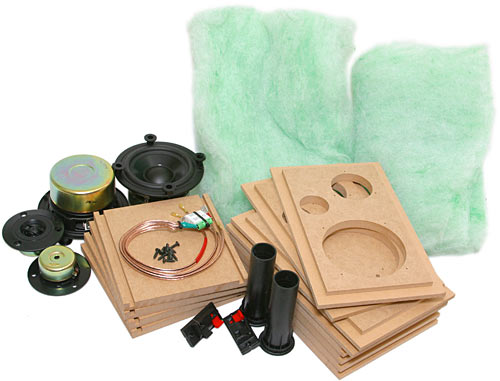
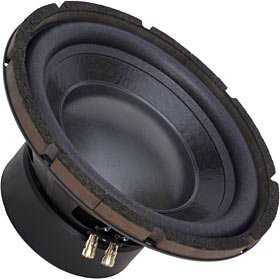
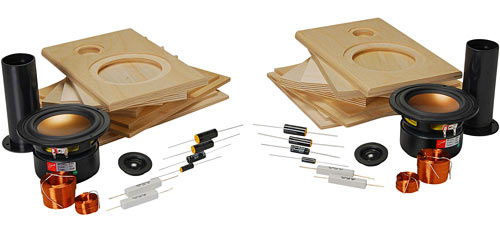
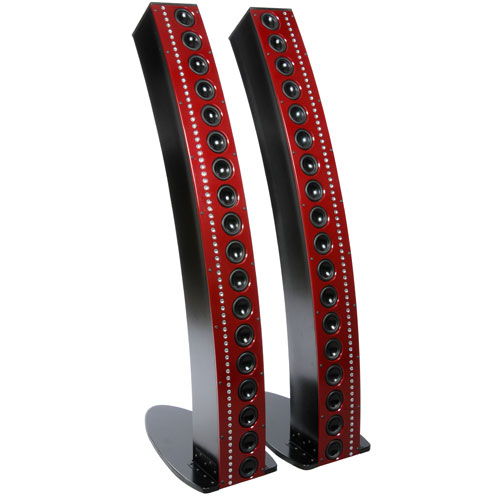
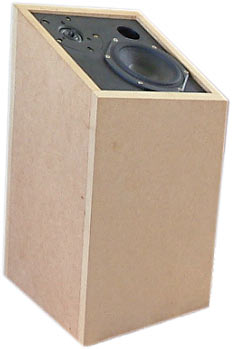
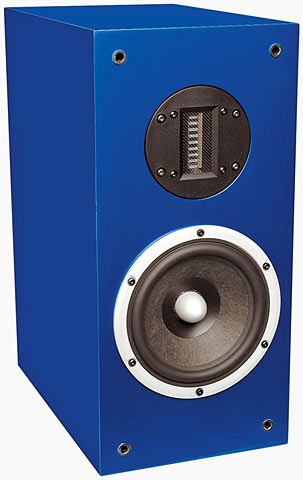
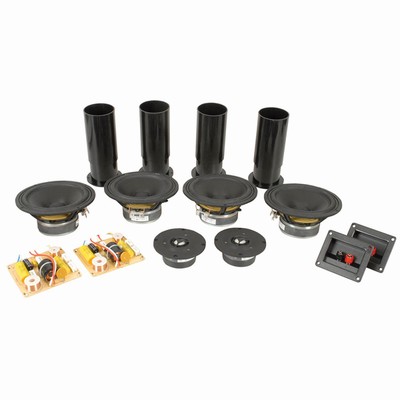
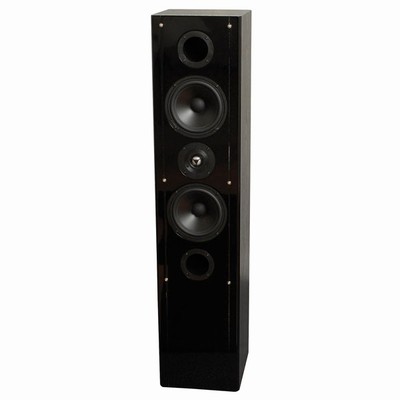
24 August 2012 at 5:09 pm
Ok, since you're doing other people's work for them, can you, or any of the other readers, suggest some good kit-suppliers in Europe too? Netherlands would be nice, but shipping within the EU is generally reasonable enough, so elsewhere would be fine too.
A good online guide to building your own active subwoofer would be fine too.
24 August 2012 at 9:33 pm
Having built myself a pair of floor-standing MTM speakers out of MDF with European drivers, I can highly recommend that you don't miter the corners... :-)
Not unless you've got access to a CNC router with high accuracy, anyway, and even then you've got to be very, very careful not to put too much glue on them, or the corners will not quite come together the way you want. A friend who's into designing his own high-end speakers did have access to a CNC router, and I got him to do me a set of panels for a subwoofer. Beautiful sound, shame it's been disconnected ever since baby #1 came along, two years ago... but getting those mitere corners just right was almost impossible.
The ones I cut myself, with a 45 deg router bit, were even further out. Let's just say, two-part bog is a great material for filling holes/gaps in MDF boxes. :-)
25 August 2012 at 1:01 am
"There's no good way to get low bass out of [Transmission lines] without making it really big, though"
Ever heard the Rega Ela (pre-2000)? 80x30x20cm and 5" cones. Bass, though, is incredible. Whenever I turn them up high enough to feel the bass a little, I get trapped listening to them and can't move.
25 August 2012 at 11:28 am
Yeah, apparently those are pretty good, and much better than you'd expect from a five-inch bass driver!
I can't find response specs for the Rega Ela, but it's extremely similar to the Royd Apex, which has some real response below 50Hz, though I think the specification-sheet 35Hz bass figure may be stretching it a bit.
(I like a speaker whose manual says "Very expensive leads claiming to use special materials and technologies, along with 'solid core' and OFC types, are not recommended." It also tells you not to bother with bi-wiring or bi-amping; bi-wiring without bi-amping is one of my favourite pieces of audiophile insanity. It's like that bit in the Nissan GTR manual that specifically commands you to not modify your car.)
At least my pontification about heavy cabinets and expensive speakers is being held up, though. The Apex, and presumably also the Ela, weigh 33 kilograms per (not very large) speaker, and in 1989 they cost £485 a pair. That's about £1000 in 2012 money (or $US1580, as I write this). Not very alarming for audiophile speakers, but it's not peanuts either.
28 August 2012 at 7:07 pm
Heavy cabinets is good. I have mine blu-tacked to a solid concrete floor. Do I get to add the planet's mass to the cabinets'?
25 August 2012 at 2:07 am
I love it when I'm wrong! My mistake is trusting ebay to have just about everything in existence for sale... single source blindness I guess.
Anyhow, off to spend more money than I can probably afford on speakers I don't actually need! :)
9 December 2012 at 5:25 pm
Happily "The Loud Speaker Kit" seems to be back under new ownership but with many of the origional designs.
I have no association with them other than I bought and built a couple of kits on your origional recommendations. I hope the new owners work out as they did enable me to have high quality sound with a mid quality budget.
12 March 2013 at 5:18 am
I can finally afford a full set of LSK's best speakers and now they don't have them anymore. The site you mention for the US doesn't have any tall speaker or sub woofers either. Sad day.